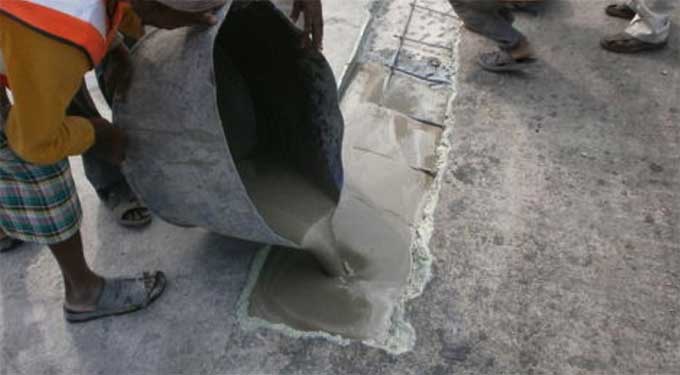
Micro Concrete: The uses and the benefits, and the methods of application

Micro Concrete, also known as micro cement (although there are a few similarities between these two), it started growing into a popular design product in recent times.
Micro Concrete is a cement-based coating applied to different surfaces such as woods and tiles to provide a look and feel of actual concrete at a much lower price and lower weight than actual concrete.
It is a cost-effective method that also helps in achieving aesthetically appealing surfaces. Micro concrete is placed at a thickness of 2 to 3 mm.
The surface of the material is non-slip, mould-free, sanitary, and stain-resistant. As a result, it's a great choice for bathrooms, kitchens, and flooring.
Difference between normal concrete and micro-concrete
Micro-concrete has some features up its sleeve that separate it from normal concrete.
1. Easy to Place and Handle
Micro concrete is sometimes sold as a premade mix, making it simple to produce and install without the use of expert personnel. Because no on-site concrete mix preparation is necessary, human mistakes are eliminated altogether. It is accessible in prepackaged mix conditions; it does not require specialized personnel or any machine to prepare and put.
2. Lesser Demand for Water
Micro concrete doesn?t take enough water to mix; instead, it is made in such a way to lessen the demand for water as compared to conventional concrete.
Due to the fact that Micro Concrete is easy to use and has the ability to adhere to other materials, it has been a major choice for effectively repairing cracked or ageing concrete structures.
3. Faster Drying
Micro concrete dries fast, allowing the covered surface to be used in as little as a day. This makes it an excellent alternative for interior decorators and individuals who wish to beautify their buildings' surfaces without causing any damage.
Advantages of using Micro-Concrete
Micro-Concrete has a number of cons over regular concrete. They are as follows:-
1. Micro-Concrete is very easy to apply, and no sort of compaction is required; hence heavy machinery is not required.
2. It has a low permeability, making it suitable for use outside as well as in bathrooms and kitchens.
3. The Cement dries up very fast and binds strongly as soon as it is applied.
4. Micro-cement is devoid of chloride, giving it a safe and long-lasting surface alternative.
5. If the owner or the customer has a very tight budget but wants an aesthetic concrete-like wall, then opting for Micro concrete is the best choice as it will cost just a fraction of the cost of normal concrete.
6. Because micro-concrete arrives in a prepared mix state, it requires no expert labour or specific instruments, thus eliminating mistakes.
7. When Micro-concrete is applied, it does not shrink from its actual amount; as a result, no cracks develop in the future.
Application of Micro-Concrete
Micro-concrete is used in several applications in both residential and commercial buildings. It provides a contemporary, residential and seamless finish.
It can be applied easily to any surface externally and internally. It is also a great option for anyone who is looking for an affordable hard-wearing concrete aesthetic to walls or floors at any place desired.
To learn more, watch the following video tutorial.
Video Source: Gireesh Kumar
It is also a waterproof material, making it an excellent choice for bathroom and kitchen splashbacks.
Due to its excellent durability, micro concrete may be used for both outdoor and indoor surfaces, including foyers, hotels, retail malls, open plazas, museums, office centres, garages, and general interior surfaces.
It creates attractive concrete walls and floors that are both cost-effective and long-lasting.


